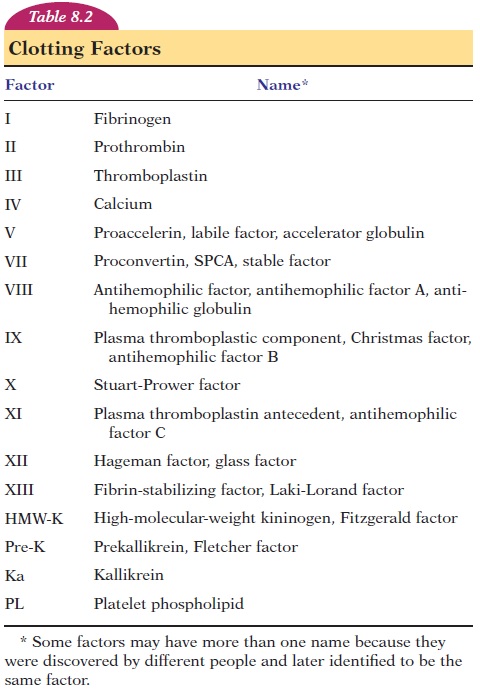Chapter: The Massage Connection ANATOMY AND PHYSIOLOGY : Cardiovascular System
The Clotting Mechanism - Blood
THE CLOTTING MECHANISM
The fundamental reaction in the clotting process is the conversion of the soluble plasma protein fibrinogen into its insoluble formfibrin. For this conver-sion, many inactive substances in the blood must be activated. Thus, the clotting mechanism is a complex cascade of reactions that culminate in the formation of a mesh of insoluble fibrin threads. Red blood cells and other cells get caught in the mesh, giving the clot its red color.

Table 8.2 lists the various factors involved, to-gether with their names, to give an idea of the num-ber of factors involved in the clotting process. These factors include calcium, many inactive enzymes manufactured by the liver, and other molecules asso-ciated with platelets and injured tissue. The flowchart in Figure 8.5 shows the complex nature of the clot-ting mechanism that results in the final solid clot ob-served when a blood vessel is injured. One important requirement for the formation of some clotting fac-tors by the liver is the vitamin K.

Vitamin K is a fat-soluble vitamin manufactured by the normal flora inhabiting the large intestine. In con-ditions in which fat absorption is impaired, vitamin K deficiency may result, with uncontrollable bleeding.
Related Topics